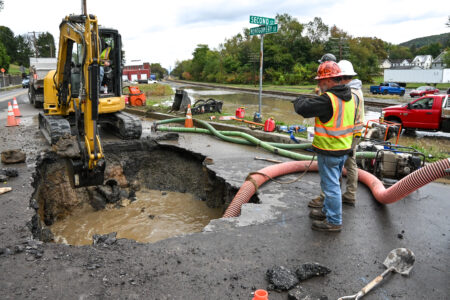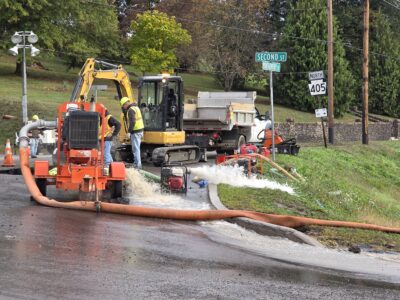Elevated levels of lead found in Muncy water
Elevated levels of lead have been found in some municipal water in Muncy in the area served by Muncy Borough Municipal Authority.
The samples are in homes and buildings within the distribution system served, according to a news release issued Wednesday.
“There is a chance that the (authority) may have tested your home or building,” the release stated. “If we did, you should receive or may have already received these results.”
It does not mean that every property that receives drinking water from the authority has lead in the drinking water.
Drinking water is not the only potential source of lead exposure, since lead can be found in air, soil and paint.
The drinking water warning was necessary as lead action level exceedance sampling shows elevated lead levels in some homes and other buildings.
Lead can cause serious health problems, especially for pregnant women and young children.
Between June 1 and Sept. 30, the
authority collected 10 samples within strategic locations through the distribution system and analyzed them for lead concentrations.
The result of this water quality sampling identified that more than 10 percent of the samples exceeded the EPA action level for lead concentration.
The authority was made aware of the exceedance on Oct. 2, and notified the state Department of Environmental Protection (DEP).
The source of the exceedance level is thought to be from copper service lines running from the authority’s main distribution lines to various homes through the distribution system. It was where the copper service lines were fused together utilizing lead solder which could potentially leach into the drinking water. It can cause these higher concentration levels within the water quality sampling.
Samples were conducted by homeowners and testing was done by an outside laboratory, so there is always a possibility that sampling error could occur.
Lead from service lines and lead plumbing and fixtures can also dissolve or break off into water and end up at the faucet.
The action level is a measure of effectiveness of corrosion control treatment in water systems.
The action is not a standard for establishing a safe level of lead in a home and/or business.
To check if corrosion control is working, the U.S. Environmental Protection Agency requires water systems to test for lead in tap in certain homes, including those with lead service lines.
Systems compare sample results from homes to EPA’s action level of something known as 0.015 mg/L (15ppb). If 10 % of the samples from these homes have water concentrations that are greater than the action level, then the system must perform actions such as public education, adjusting treatment, and lead service line replacement.
There are steps to reduce exposure to lead in water:
• Clean the aerator
• Use cold water as boiling water does not remove lead
• Run the water as the more time water has been sitting in pipes, the more lead it may contain.
Filters can reduce lead in drinking water. Do not run hot water through the filter.
Check the EPA’s online guide to learn how to find lead in household pipes.
Learn if there is construction occurring in neighborhoods that could disrupt service lines.
Have water tested and get children tested for lead levels in blood.
The authority will take all appropriate measures with the DEP to implement and perform a more extensive testing strategy to determine the magnitude of the lead concentrations throughout the distribution system to be able to provide customers with a clean and reliable source of drinking water.
For questions, the authority can be contacted at 570-935-0087. Doug Brown serves as the authority water manager.




